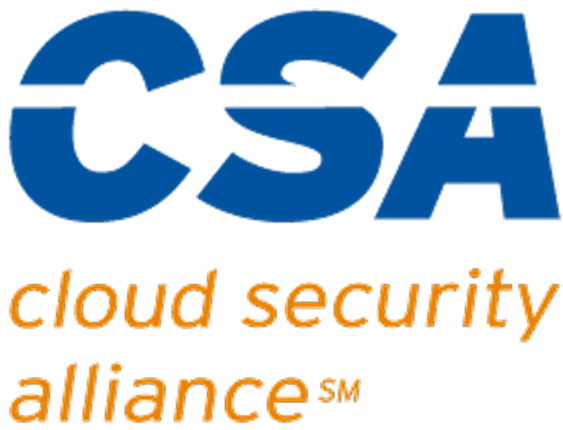Small businesses face numerous IT challenges that can hinder growth and security. Many overlook essential areas such as cybersecurity, data management, and employee training. Failing to address these issues leads to vulnerabilities that can compromise operations and damage reputations.

Timely action is crucial for small business owners and decision-makers. Ignoring IT mistakes can result in costly repercussions, from data breaches to lost productivity. This article highlights seven common IT errors that small businesses make. We will provide straightforward solutions to help you strengthen your technology infrastructure and safeguard your company’s future.
Ignoring Cybersecurity Measures
Many small businesses overlook the necessity of robust cybersecurity measures, putting sensitive data and business operations at risk. Failing to implement basic security protocols such as firewalls, encryption, and secure passwords can expose organizations to cyber threats. For instance, a restaurant chain might use an under-secured Wi-Fi network for staff to take orders but inadvertently allow hackers easy access to customer payment details. Establishing fundamental security practices is essential in shielding your business from potential breaches.
Relying on outdated software and hardware compounds these risks significantly. Companies often postpone necessary updates due to perceived costs or operational interruptions. However, using obsolete systems makes networks vulnerable to exploitation. A small accounting firm utilizing an outdated operating system could encounter significant vulnerabilities against malware attacks. Investing in regular updates can safeguard your systems and protect client information from theft.
Regular security audits are another critical element overlooked by many small organizations. These audits assess existing IT infrastructure and identify weaknesses or gaps in protection measures. For example, if a company fails to conduct these checks annually, it may miss out on discovering lingering vulnerabilities that have emerged since their last review. Schedule routine audits as part of your operational strategy, enabling you to address issues proactively rather than reactively.
Small businesses minimize risks and establish trust with their clients and partners by prioritizing cybersecurity measures. Implementing basic protocols, ensuring up-to-date software and hardware functions smoothly, and conducting regular assessments will pave the way for a more secure business environment.
Neglecting Data Backup Solutions
Many small businesses underestimate the critical need for robust data protection. They often view backup solutions as optional rather than essential. This oversight can lead to devastating consequences, such as losing vital customer information, financial records, or project files due to software failure or cyber-attacks. For instance, a small accounting firm that fails to back up its client data could face ruin if ransomware infiltrates its systems, demanding payment to regain access. Prompt and effective backup methods are crucial to safeguard against these vulnerabilities.
Choosing inadequate backup methods compounds this risk. Some businesses rely solely on local storage systems or external hard drives without considering their limitations. These options can fail in major incidents like fire or theft. Cloud-based solutions offer more security and redundancy but require careful selection and configuration to avoid potential shortcomings. A business must assess its needs thoroughly and select a method that aligns with those needs while ensuring scalability for future growth.
Regularly testing backup systems is another commonly overlooked aspect of data protection. Businesses may have backup processes but fail to confirm they work correctly until it’s too late. Regularly scheduled tests can reveal issues within backup protocols before a crisis occurs. For example, a retailer conducting quarterly backups might find an error message during restoration tests—preventing them from recovering sales data during peak season when outages could cripple operations.
Neglecting data backup solutions can leave small businesses vulnerable to significant losses. Implement comprehensive strategies that involve choosing reliable backup methods and testing them regularly. By prioritizing backups today, your business can avoid catastrophic disruptions tomorrow.
Overlooking Employee Training
Small businesses often overlook the importance of comprehensive employee training on new technologies. Employees are the first line of defense against cyber threats, yet many staff members receive insufficient orientation when new systems or tools are introduced. For instance, an employee may be tasked with using sophisticated project management software without proper guidance. This lack of training can lead to inefficiencies and may expose vulnerabilities in security protocols.
Moreover, many employees need more awareness regarding phishing scams and other online threats. With cybercriminals becoming increasingly sophisticated in their methods, all team members must understand the basics of cybersecurity. A classic example includes an employee falling prey to a phishing email that appears legitimate but leads to a data breach. When employees do not feel confident recognizing such threats, they place the entire organization at risk.
It is essential to promote a culture of cybersecurity vigilance within the organization. Encourage open discussions about security practices and schedule regular training sessions or workshops focusing on potential risks and safe computing practices. By fostering an environment where employees feel empowered to ask questions and report suspicious activities, you build resilience against possible breaches.
Establish a routine training schedule that addresses both technology updates and emerging cyber threats. Regularly assess your team’s knowledge through simulations or quizzes on phishing attempts and data protection. This approach will ensure your employees remain informed and capable of protecting your business’s valuable information assets.
Skipping IT Documentation
Small businesses often overlook the importance of maintaining accurate IT documentation, which can lead to significant challenges. Organizations may struggle during audits or emergency incidents without clear records of IT assets and policies. For instance, if a critical software license expires unexpectedly due to poor tracking, it can halt operations and disrupt service delivery. To prevent such disruptions, establish a system for documenting all IT assets—including hardware and software—and their respective usage policies.
Ignoring standard operating procedures (SOPs) further complicates tech utilization within the business. Employees may use technology inconsistently or improperly without defined guidelines, leading to inefficiencies and errors that could have been avoided. For example, staff members must follow specific protocols for handling sensitive data to prevent non-compliance with regulations like the GDPR or HIPAA. Therefore, creating comprehensive SOPs for technology use is essential in promoting consistency and safeguarding sensitive information.
Failure to document incident responses is another oversight that small businesses should address promptly. When technical issues arise—whether from cyber threats or equipment malfunctions—a documented response plan clarifies who to contact and what steps to take next. Organizations that fail to maintain this documentation may repeat mistakes or face prolonged downtimes due to ineffective crisis responses. To enhance operational continuity, develop a structured process for logging incidents and lessons learned that future team members can reference.
In summary, comprehensive IT documentation cultivates an organized asset management approach, establishes clear employee expectations regarding technology use, and solidifies effective incident response strategies. Small businesses must prioritize these practices, which will promote efficiency and resilience across all aspects of their operations.
Poor Vendor Management
Small businesses often select vendors without conducting thorough research. This approach can lead to partnerships not aligning with the company’s specific needs or objectives. For instance, a business may choose an IT service provider based solely on price, only to find later that they cannot support crucial systems. Small businesses should review potential vendors and check references to prevent this mistake. Engaging with existing clients of a vendor can provide valuable insights into their reliability and performance.
Establishing clear expectations with IT service providers is vital for successful vendor relationships. Without defined goals and responsibilities, misunderstandings can quickly arise, causing disruptions in service delivery. For example, a business that does not clarify response times for technical support issues may wait longer than expected during critical downtimes. Regular check-ins and detailed communication plans can help ensure both parties remain aligned and accountable throughout their partnership.
Overlooking contract negotiations and service level agreements (SLAs) can have significant long-term repercussions for small businesses. Many entrepreneurs focus primarily on securing the lowest price while neglecting to negotiate terms that protect their interests. An SLA outlining guaranteed response times, uptime commitments, and penalties for non-performance helps establish a framework for accountability between businesses and vendors. Therefore, small companies should prioritize discussing these elements during contract negotiations to create mutually beneficial agreements that safeguard operational efficiency.
Poor vendor management leads to inefficiencies and challenges that hinder business growth. By thoroughly researching vendor options, setting clear expectations through proactive communication, and negotiating robust contracts with SLAs in place, small businesses will establish strong partnerships that enhance resilience in their IT infrastructure. Taking these steps ensures a seamless alignment between IT services and business objectives.
Delaying Hardware Upgrades
Many small businesses are using outdated hardware, which can significantly hinder productivity. For example, employees relying on older computers may experience slow processing speeds, leading to frustration and reduced efficiency when completing tasks. The typical delay in system response time can create bottlenecks, especially during peak hours when multiple staff members need access to shared resources. Investing in modern equipment not only improves performance but also enhances employee morale by providing them with reliable tools.
Another common mistake is misjudging the total cost of ownership (TCO) for existing devices. Small business owners often assume that maintaining old equipment is more cost-effective than upgrading. However, they fail to consider hidden costs, such as increased repair expenses and decreased productivity due to prolonged downtime. For instance, a small marketing firm might continue using an old printer instead of investing in a new one. Over time, the accumulated ink and maintenance costs could exceed the price of a new printer that operates more efficiently and offers advanced features.
Waiting too long to replace or upgrade essential tools impacts scalability and growth opportunities. When businesses rely on outdated technology, they risk falling behind their competitors, who leverage advanced solutions to gain market share. Consider a small e-commerce retailer that postpones updating its website platform due to budget constraints; this decision can lead directly to missed sales opportunities as potential customers encounter slow load times or glitches at crucial points in their shopping experience. As businesses grow, so should their technological capabilities—delaying upgrades only hampers future expansion.
To address these issues effectively, small business leaders must regularly assess their hardware needs and implement a proactive replacement schedule for outdated devices. By evaluating TCO and considering both short-term impacts and long-term benefits associated with purchasing new equipment, companies will make informed decisions that enhance productivity now while positioning themselves for sustained success in the future.
Inconsistent Software Updates
Many small businesses overlook the importance of timely software updates. Failing to prioritize these updates can lead to significant security vulnerabilities, performance issues, and even loss of productivity. For example, a company using outdated accounting software may face bugs that could disrupt financial reporting or compromise sensitive data. Regularly updating software ensures that applications run smoothly and remain secure against threats.
Ignoring end-user feedback poses another risk in the realm of software updates. Employees relying on specific applications often encounter issues that hinder their workflow. By not addressing their concerns or failing to implement necessary updates, companies may face frustration among staff members and reduced efficiency overall. Small businesses should establish channels for employees to report software problems and ensure that IT teams act on this feedback promptly.
Additionally, outdated software versions increase the likelihood of compatibility problems with other systems or applications. As technology evolves rapidly, newer tools require updated supporting software to function effectively. A small business might find its customer relationship management (CRM) system unable to integrate with new marketing automation tools because it hasn’t been updated in years. To avoid such scenarios, businesses must create a schedule for regular software reviews and updates across all platforms they use.
Establishing a routine for consistent software updates is critical for maintaining operational efficiency and security within an organization. Proactive efforts to keep applications current will protect small businesses from potential disruptions while fostering a productive work environment where employees can thrive without technical hindrances.
Taking Action Against Common IT Mistakes
In conclusion, small businesses must address common IT mistakes to maintain efficiency and security. Key areas of concern include:
- Ignoring cybersecurity measures.
- Neglecting data backup solutions.
- Undertraining employees.
- Skipping IT documentation.
- Poor vendor management.
- Delaying hardware upgrades.
- Inconsistent software updates.
Each of these issues can lead to significant disruptions and financial losses.
Proactive steps will help small businesses avoid these pitfalls. Implement robust cybersecurity protocols immediately. Ensure regular data backups are in place and tested frequently. Invest in employee training that emphasizes technology use and cyber threats. Maintain accurate IT documentation and actively manage vendor relationships. Upgrade hardware timely and prioritize consistent software updates. These actions will strengthen your business’s IT framework today and in the future.




